British Amphibians List with Pictures & Facts. Great Britain is home to 6 native amphibians: one frog, two toads, and three species of newt. A handful of introduced species can also be found in scattered locations across the UK.
There may not be many of them, but the amphibians of Britain lead fascinating lives and play an important part in the ecosystem. Let’s meet them …
A Guide to the Amphibians of Great Britain
This page is a complete guide to the amphibians of Great Britain. It contains pictures and facts about all six native species and several introduced species.
Amphibians
Unlike reptiles, amphibians need water in which to lay their eggs and complete their life cycle. They are seldom found far from a source of water or a damp environment. Amphibians spend the first part of their lives in an aquatic, water-based phase, before metamorphosing into their adult, land-based forms.
- You can find out more about the different types of amphibian, and the amazing amphibian life cycle here: Amphibians: The Ultimate Guide.
Let us know in the comments if you've seen any of the species on this page!
Other Amphibian Articles On Active Wild
- Amphibians: The Ultimate Guide
- African Amphibians
- Asian Amphibians
- Australian Amphibians
- European Amphibians
- North American Amphibians
- South American Amphibians
- You'll find awesome amphibian books in our Natural History Bookstore
Native British Amphibians
British Newts
Newts are members of the salamander subfamily Pleurodelinae. Unlike other salamanders, they remain aquatic or semi-aquatic for all of their lives. (Many salamanders leave the water after reaching their adult form, only returning to breed.)
Like all salamanders, newts have long, lizard-like bodies and tails.
Great Crested Newt
- Scientific Name: Triturus cristatus
- Global Conservation Status: Least Concern
The great crested newt is the largest newt found in Britain. Females are slightly larger than the males, reaching lengths of up to 16 cm (6.3 in.).
Both males and females have grey flanks marked with darker spots. The undersides are orange and are patterned with dark spots. (The pattern is unique to each individual.) The skin is bumpy, which has led to the species’ alternative name, the ‘warty newt’.
During the breeding season, the male can easily be identified by the large, ragged crest that runs the length of its back and a smoother crest along its tail.
Although the great crested newt is found across most of Great Britain, it is thinly distributed and absent from many areas. It is most often found in large, weedy pools and small lakes.
Palmate Newt
- Scientific Name: Lissotriton helveticus
- Global Conservation Status: Least Concern
The palmate newt is very similar in appearance to the smooth newt. Its smooth skin ranges in colour from dull olive-green to rusty brown and is marked with darker spots and blotches. The undersides are paler brown or orange. A small crest runs the length of the body and tail. The palmate newt’s throat is unspotted, unlike that of the smooth newt.
The palmate newt reaches lengths of around 9 cm (3.54 in.).
During the breeding season the male develops webbing on its hind feet and a thin thread-like extension of the tail.
The palmate newt is widespread throughout much of Great Britain, but is absent from central England. The species prefers heaths, moors and bogs. It is often found in shallow pools in moorlands and heathlands, and also inhabits canals.
Smooth Newt
- Scientific Name: Lissotriton vulgaris
- Global Conservation Status: Least Concern
As its name suggests, the smooth newt has smooth skin. The back and flanks are grey-brown in colour. The undersides are orange and the throat pale and spotted.
Outside of the breeding season, the smooth newt’s spotted throat is the best means of distinguishing the smooth newt from the similar-looking palmate newt.
The smooth newt grows to around 10 cm (3.93 in.) in length. It is found throughout Great Britain and is the only newt found in Ireland.
British Frogs & Toads
Frogs and toads make up the amphibian order Anura. A frog in its aquatic phase is known as a tadpole. Adult frogs lack tails, and often have well-developed hind legs for jumping and swimming.
Frogs with relatively dry, warty skin are often referred to as toads, although the distinction is informal and a little blurred. The anuran family Bufonidae contains the ‘true’ toads; but even some of its members are known as ‘frogs’.
Two of the three British frogs are toads in the family Bufonidae.
Common Frog
- Scientific Name: Rana temporaria
- Global Conservation Status: Least Concern
The common frog is found throughout Great Britain and Ireland. The species is also known as the European frog and is widespread throughout mainland Europe.
The female common frog is larger than the male, reaching lengths of up to 13cm (5.12 in.). Skin colour ranges from olive green to dark brown. The back, sides and limbs are patterned with darker spots, blotches and stripes. Behind each eye is a dark patch that extends over the tympanum (eardrum).
The common frog is often seen in or near freshwater ditches, ponds, lakes and streams.
- You can find out more about this species here: Common Frog Facts
Common Toad
- Scientific Name: Bufo bufo
- Global Conservation Status: Least Concern
The common toad is also known as the European toad. It is found throughout Great Britain but is absent from Ireland. In spring the common toad can be seen near ponds, ditches and slow-moving streams and rivers. In other times of the year the species may be found surprisingly far from water.
Like the common frog, females are slightly larger than the males and can reach lengths of around 13cm (5.12 in.). The skin is olive-brown in colour and has a bumpy, warty texture.
The common toad is easily distinguished from the common frog by its warty skin and tendency to walk rather than jump.
- You can find out more about this species here: Common Toad Facts
Natterjack Toad
- Scientific Name: Epidalea calamita
- Global Conservation Status: Least Concern
The natterjack toad is only found in around 60 locations in south, east and northwest England, southwest Scotland and southwest Ireland. It lives on sand dunes and coastal heaths and marshes.
The natterjack toad grows to around 8 cm (3.15 in.). It skin is warty and green-brown in colour. A distinctive yellow stripe runs along the centre of the back. The toad’s body has a ‘flattened’ appearance, and the legs are short. Due to its short legs, the natterjack toad runs with a distinctive gait. The species is a poor swimmer.
Non-native British Amphibians
Several non-native amphibian species have begun to breed in Great Britain. Most of these colonies were founded by pets that either escaped or were deliberately released into the wild.
Edible Frog
- Scientific Name: Rana esculenta
- Global Conservation Status: Least Concern
The edible frog is a common species in mainland Europe, but rarely seen in Great Britain, where it is an introduced species. The edible frog is used in the French delicacy ‘frog’s legs’. The species is a hybrid between the pool frog and the marsh frog.
Marsh Frog
- Scientific Name: Pelophylax ridibundus
- Global Conservation Status: Least Concern
The marsh frog is Europe’s largest frog, reaching 17 cm (6.7 in.) in length. It is part of the green frog ‘complex’ (a group of very closely-related species) with the edible frog and the pool frog.
The marsh frog has been introduced to a small number of locations in Kent and Sussex. It spends most of the year in the water. Its call resembles a ducks ‘quack’.
(Common) Midwife Toad
- Scientific Name: Alytes obstetricans
- Global Conservation Status: Least Concern
The midwife toad is a small amphibian native to western mainland Europe and introduced to Bedfordshire, England. It is pale grey in colour and reaches a length of no more than 5 cm (2 in.). The male midwife toad carries eggs wrapped around its hind legs. It is this behaviour that gave the species its name.
Yellow-bellied Toad
- Scientific Name: Bombina variegate
- Global Conservation Status: Least Concern
The small colonies of yellow-bellied toads present in Great Britain are a result of escaped / released pets. When threatened, these small frogs play dead and expose their brightly-coloured undersides.
Alpine Newt
- Scientific Name: Ichthyosaura alpestris
- Global Conservation Status: Least Concern
The Alpine newt is native to Central Europe and mountainous regions of Spain. Introduced populations can be found in scattered locations across Great Britain.
The Alpine newt is slightly longer and more heavily-built than the native smooth and palmate newts. It is dull brown / black with an orange belly. A black and white spotted pattern appears along the newt’s sides, crest, tail and legs. The newt’s patterning and colour are variable.
Amphibians in Britain: Conclusion & Related Articles
We hope that you have enjoyed discovering the amazing amphibians of Great Britain. There may not be many of them but they are fascinating in their own way; why not make it your mission to see all six native species?
Discover More Amazing Amphibians At Active Wild
- Amphibians: The Ultimate Guide
- African Amphibians
- Asian Amphibians
- Australian Amphibians
- European Amphibians
- North American Amphibians
- South American Amphibians
- You'll find awesome amphibian books in our Natural History Bookstore

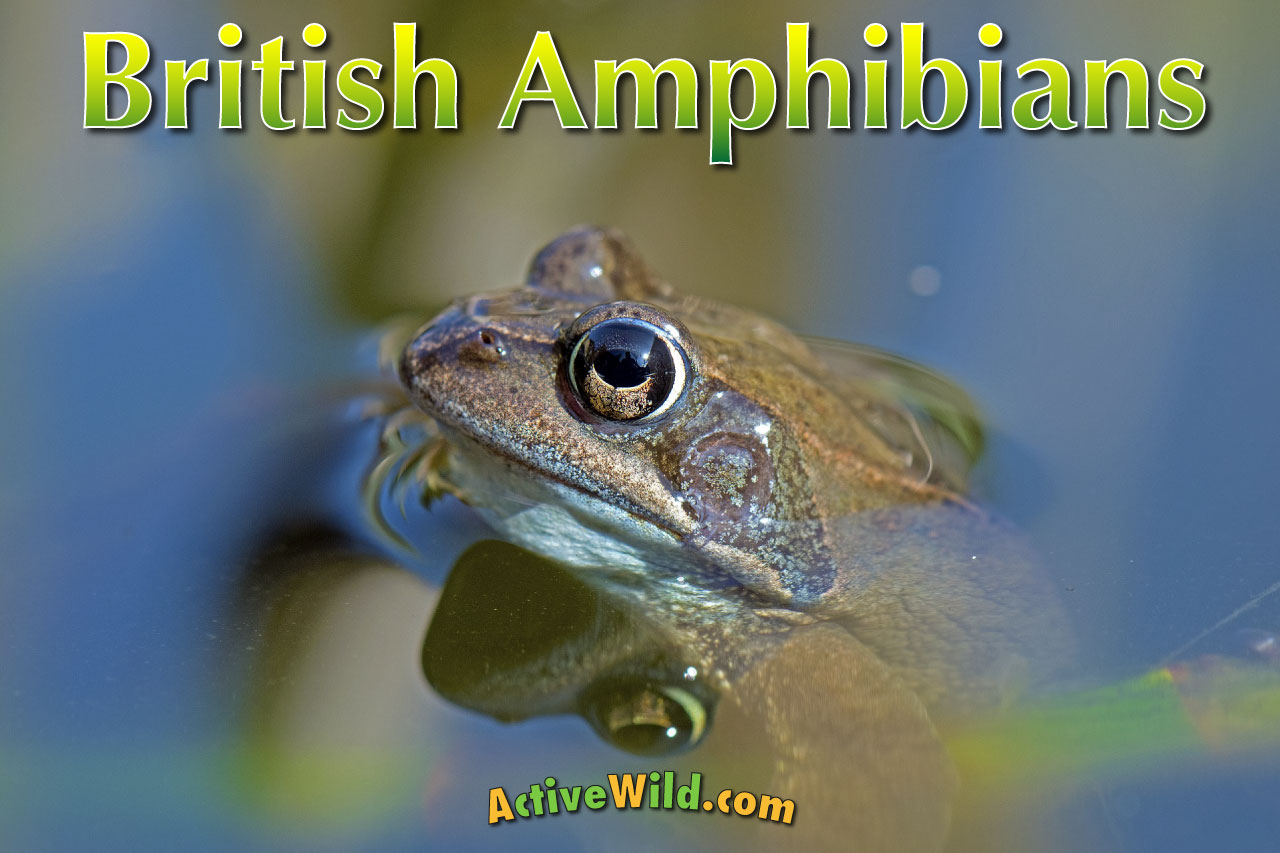
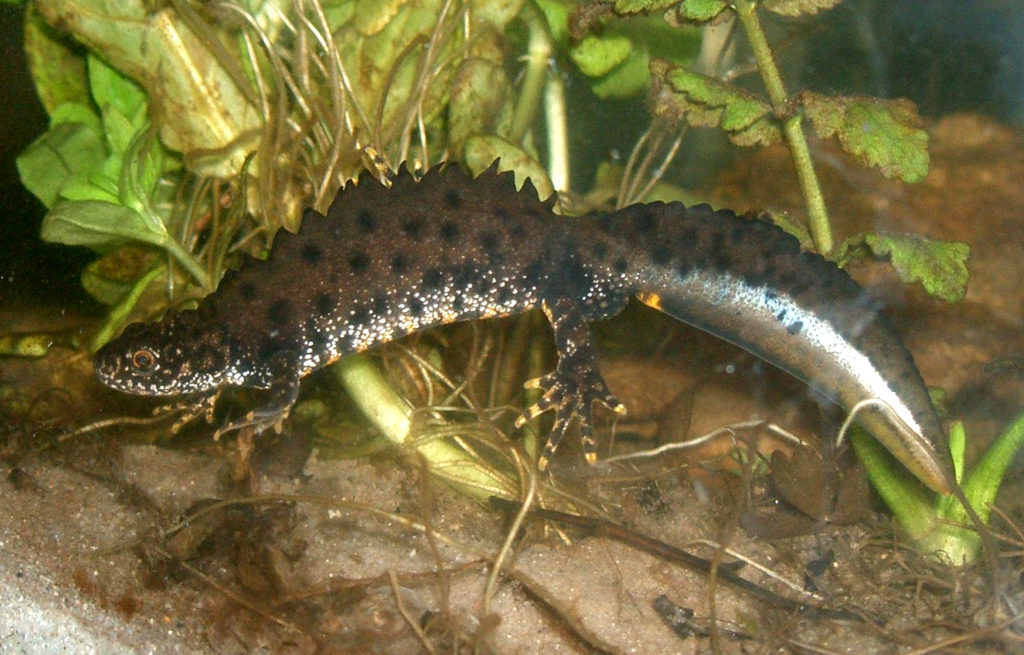
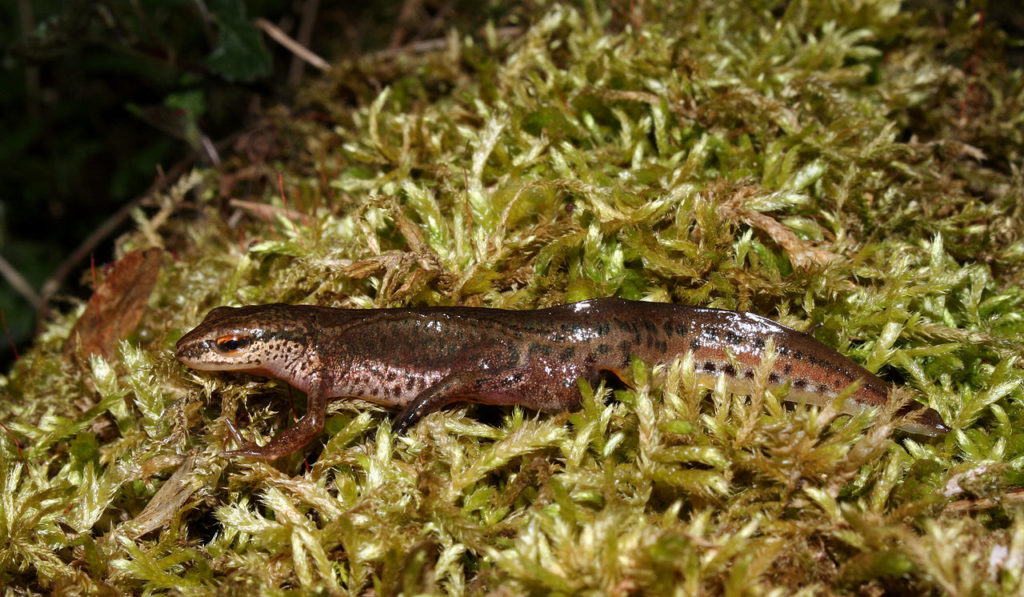
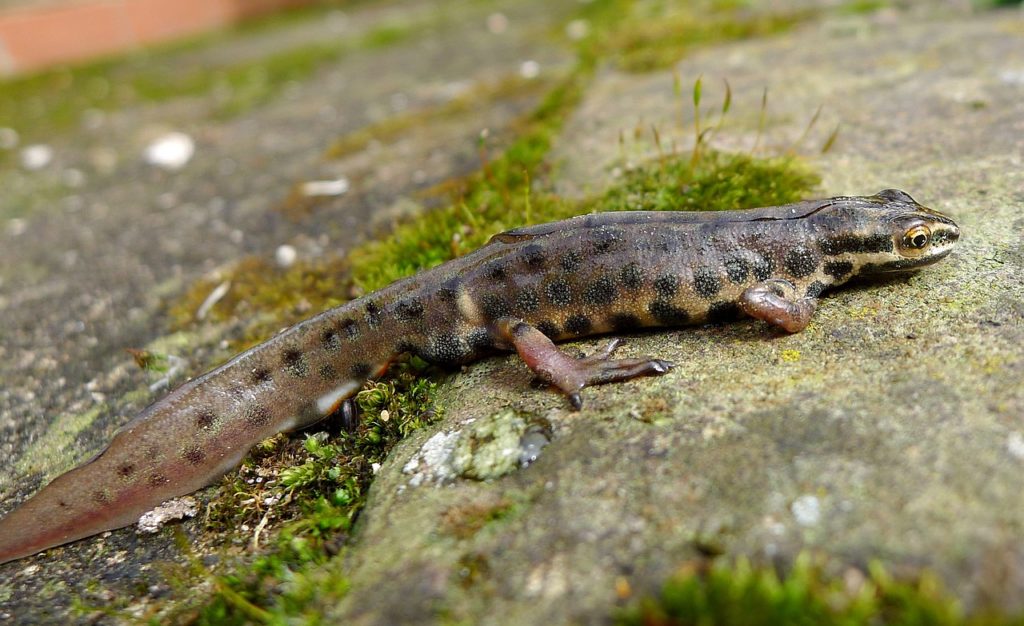
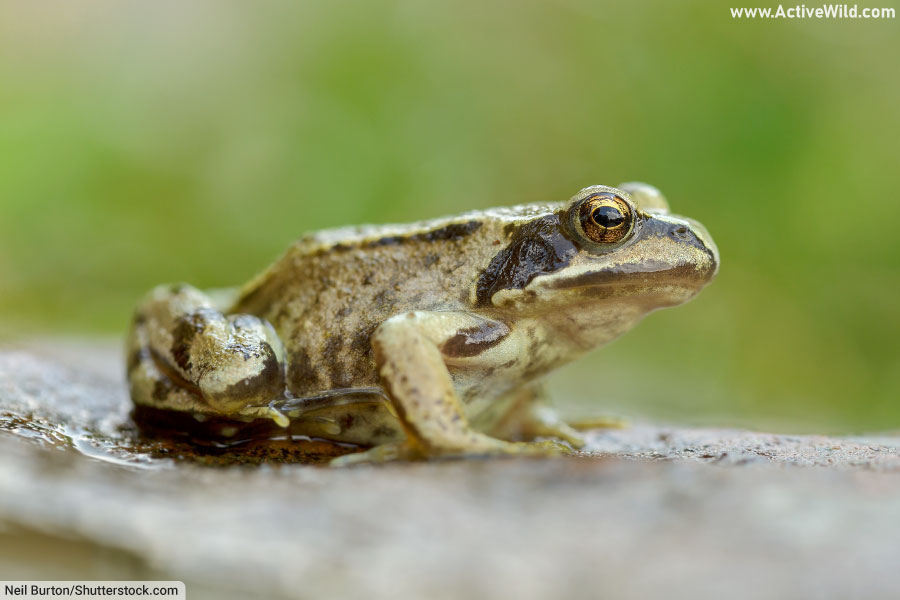
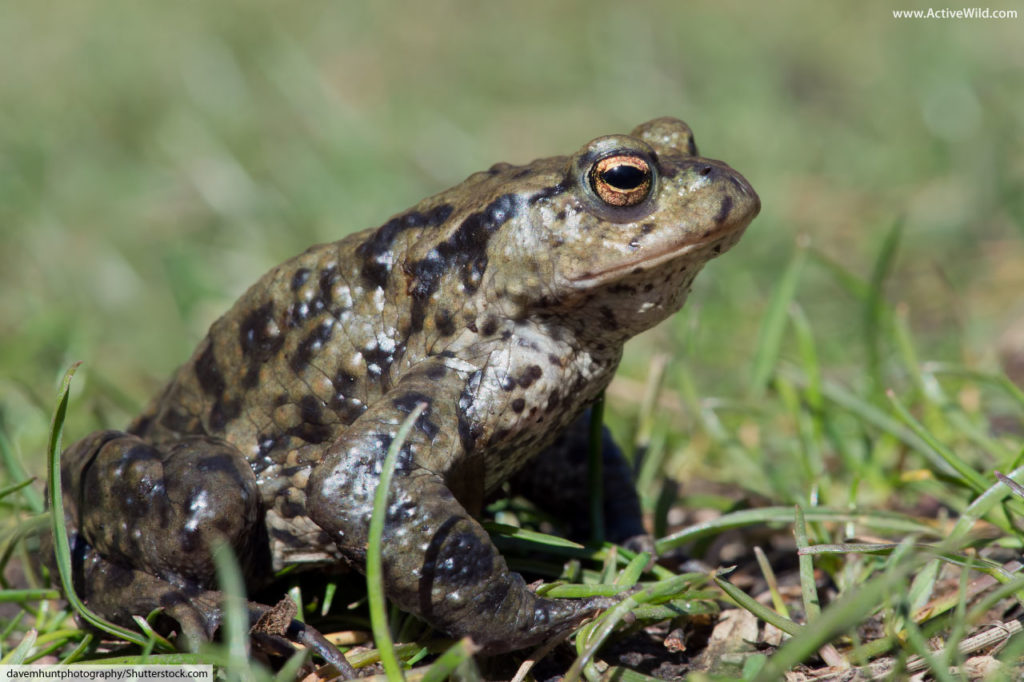
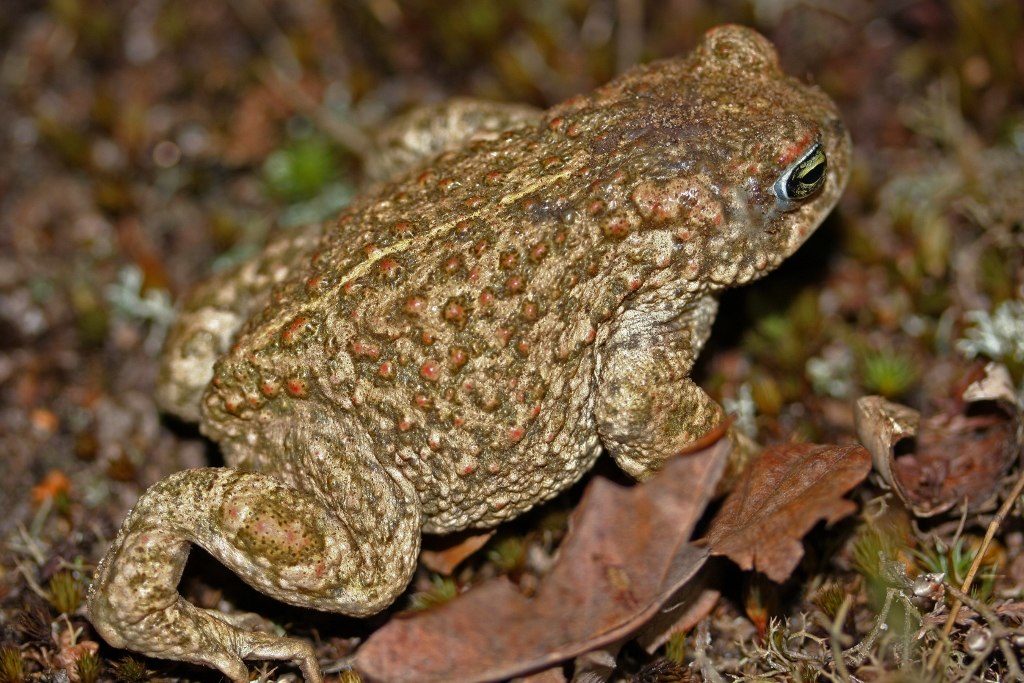
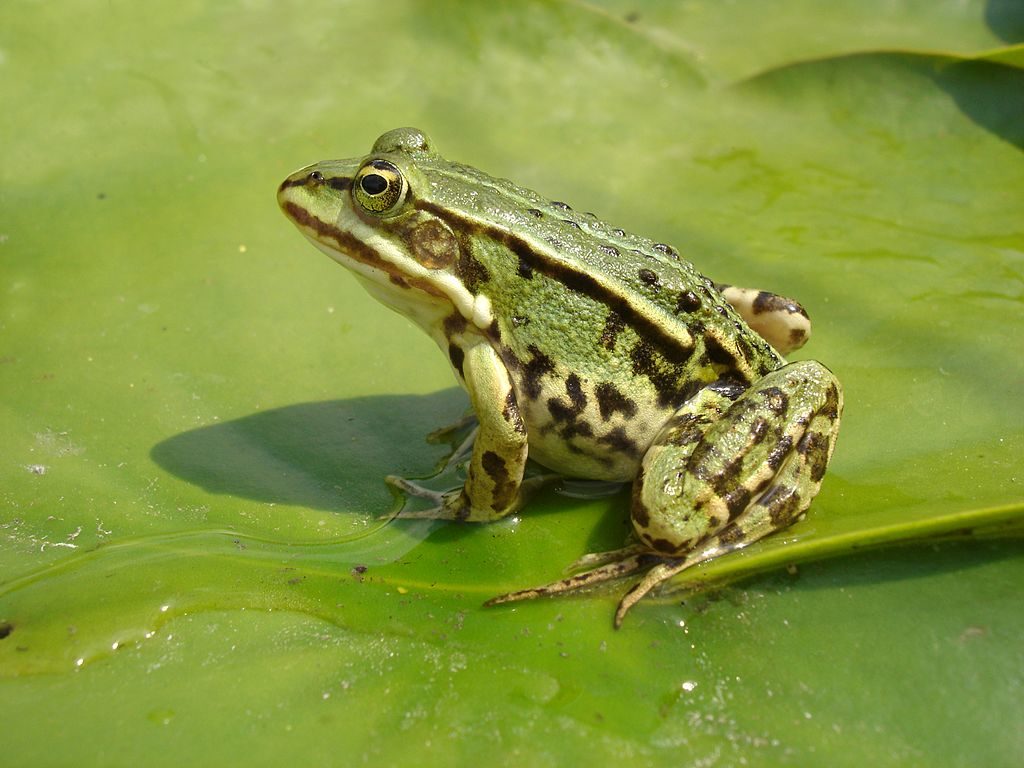
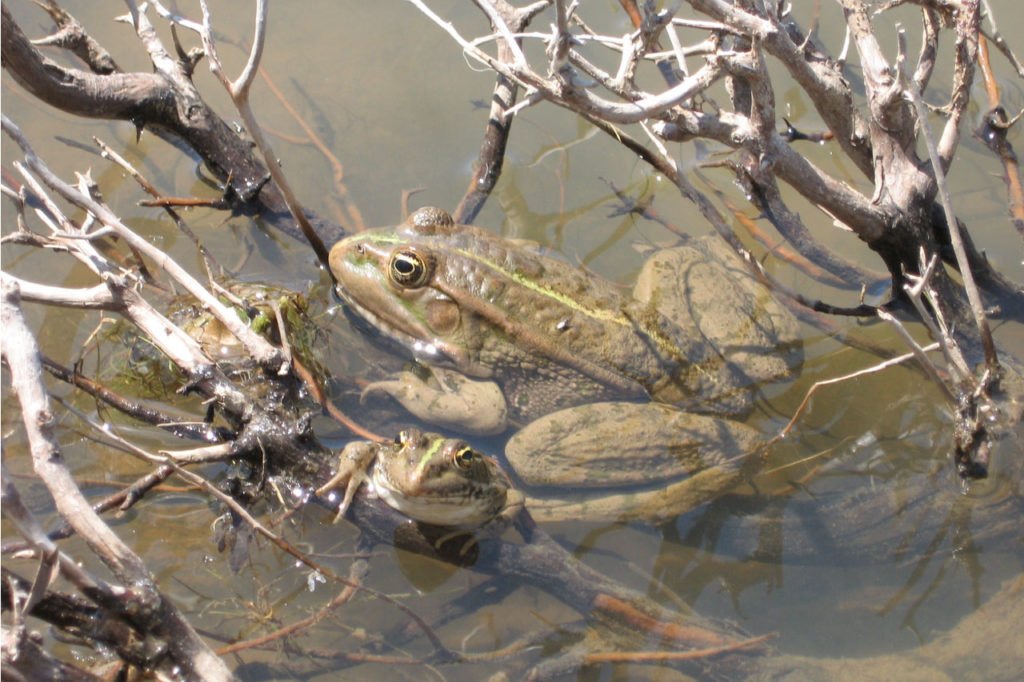
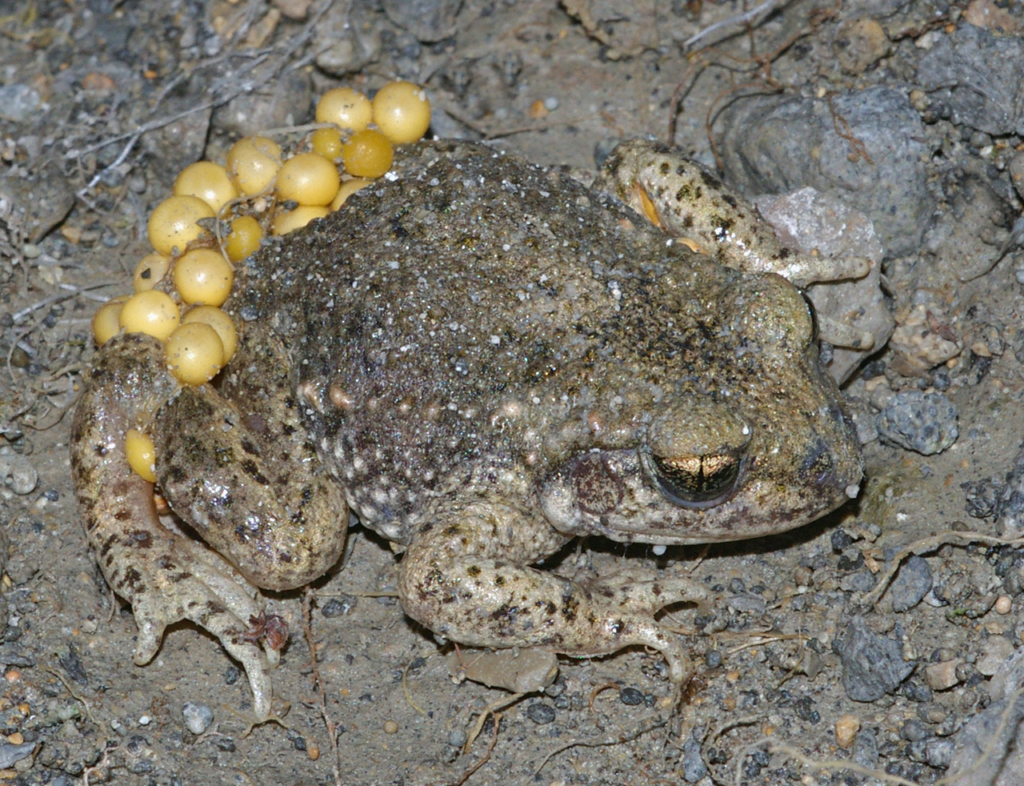
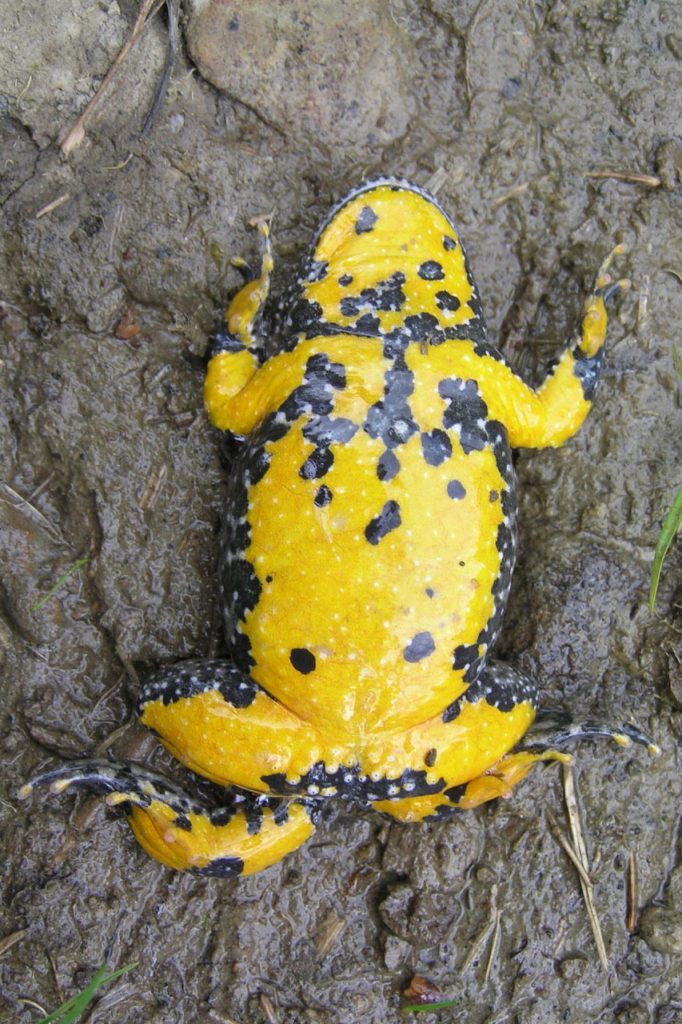
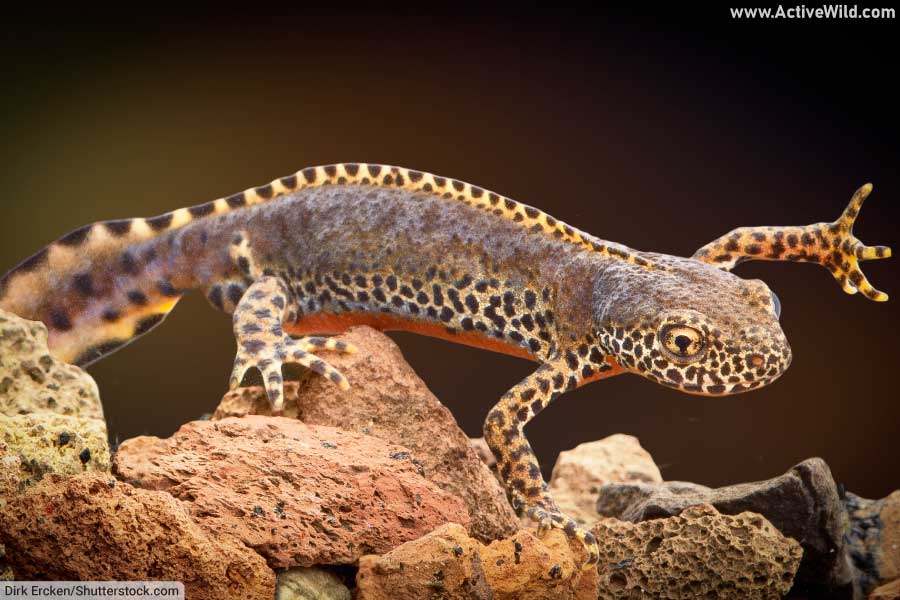

How can I tell a frog from a newt!
I found a very dead desicated creature in my (first floor) bathroom under neath laundry box. The big mystery is two fold, how onearth did it get there and what exactly it is. I have taken a photo of it but as yet cannot work out how to send the image to you.
Many thanks
Hi Margaret,
The frog / newt body shape is very different (frogs and toads are ’round’ with long rear legs; newts are long and thin, with short legs and long tails). Without seeing it we suspect your animal is either a common frog or a common toad, based purely on the likelyhood of its entering the house and getting up the stairs!